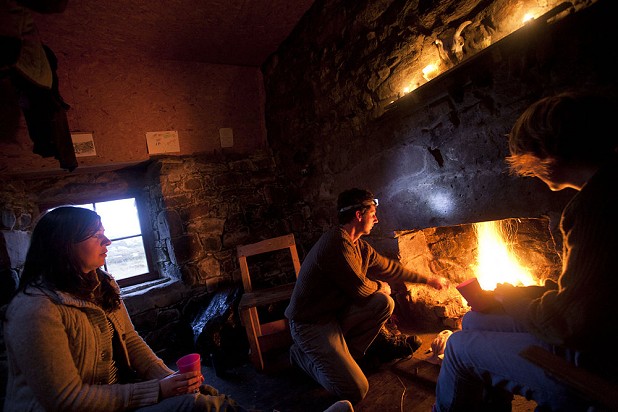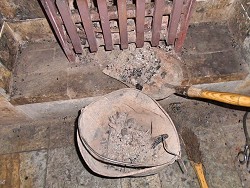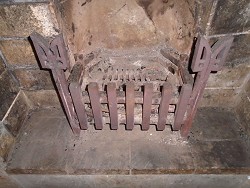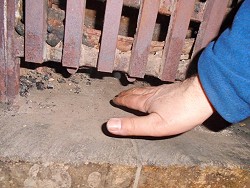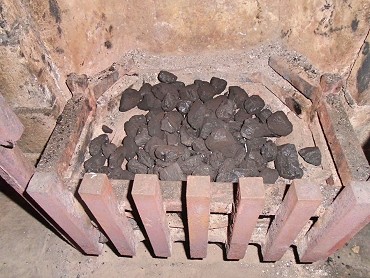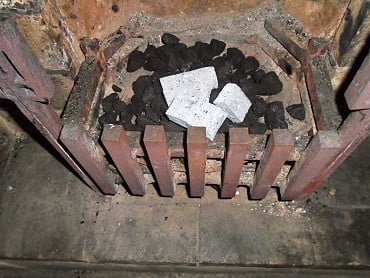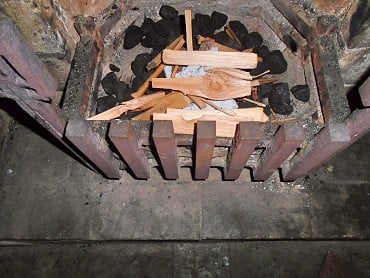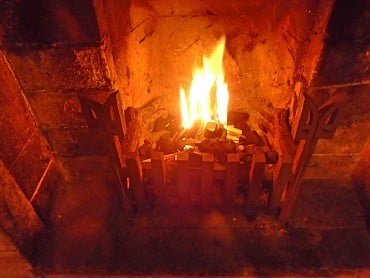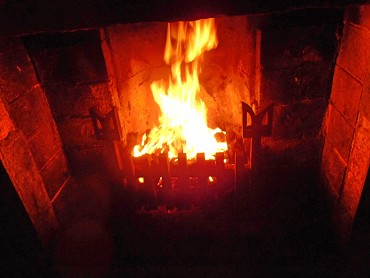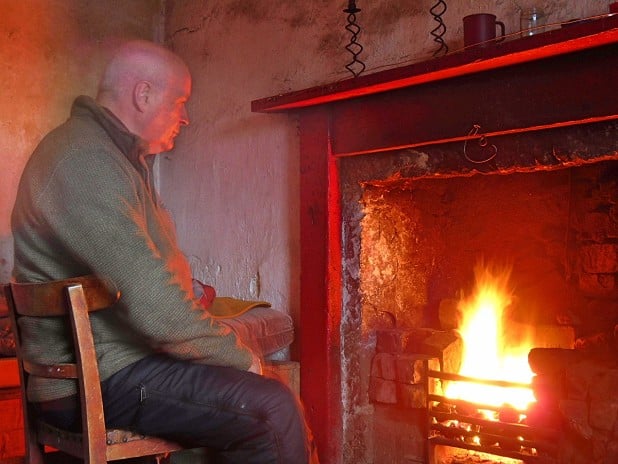How to Light a Bothy Fire
Lounging by a roaring fire is as essential to a bothy night as whisky and wet socks. If you've ever struggled to kindle a flame in a busted bothy grate, try these tips from John Firestarter Burns.
After six miles slogging up a mountain track, heading for a bothy, I start to hate my pack. It's heavy, cumbersome, and expects me to carry it. Why can't they invent a pack that can walk? The Internet's all very well but it won't get your dinner into Sheneval Bothy will it? The item in my pack I resent carrying the most is coal. It's heavy and dirty but, I must confess, I wouldn't be without it.
I often read accounts in bothy logbooks of walkers who have failed to light their fire. Most people live in centrally heated houses and never have to light a fire, so it's understandable that they struggle when presented with damp fuel and a flue that doesn't draw. This article will tell you how to get a nice roaring fire so you can warm your toes and spend an evening watching the dancing flames - an essential part of the bothy magic.
I'll explain here how to light a coal fire. Wood fires are a bit different, and I'll deal with them another time.
Why coal?
When it comes to fires and bothies, the key thing to point out - other than the obvious not burning the place down - is that most bothies don't have a plentiful supply of wood nearby. The British hills are denuded of trees, and since bothies tend to be high, wild and far from the woods, it's best to bring your own fuel. Coal is relatively compact, and offers the most warmth for your weight. I tend to take about 6-8kg: yes that's quite some load, but you only have to carry it one way, and on a cold night you'll be glad of it.
What sort of coal?
Always get the best coal you can. Get house coal, not smokeless fuel. I find it best to go to a coal merchant, since the stuff you can buy from petrol stations is often expensive and poor quality. You should be able to get a 25kg bag for about £10. You also need firelighters and kindling - which is little sticks if you're one of the central heating brigade - to start the fire. Firelighters come in small cubes, the best ones are light in weight and individually wrapped in film. Avoid kindling that has been left outside the store in the rain as it'll be damp and useless.
Step one
Preparation is everything. Clean any old ash and cinders out of the fire grate. The fire will need oxygen to burn, and it won't get that if it's choked with ash. Sometimes the previous occupants will have left the fire full of ash. That's not always their fault as the fire may have retained heat overnight and, in the early morning, it may have been too hot to clear; the other explanation is the people here before you were just bone idle. When you leave next morning, try and clean the fire out for the next visitor, it's good manners.
Step Two
A coal fire needs to draw in air up from underneath to burn properly. Try and ensure that there is space underneath the grate to allow air in. Bothy fireplaces take a fair amount of stick and it's not unusual to find the grate broken. I've had to improvise many times, with everything from a rusty horseshoe to a bit of old bed spring, just to try and get an air space beneath the fire.
Step Three
Once the fire is clean lay a bed of coal across the grate. This only needs to be one lump of coal deep.
Step Four
Now place your firelighters close together on this bed of coal. It takes intense heat to get coal to burn so what you are trying to achieve is a small area that's very hot. Basically, you are trying to produce a 'heart' for your fire that will be hot enough to get the coal burning.
Step Five
Place your kindling on top of the firelighters. You don't need a great deal of kindling, half a dozen sticks should be enough, and they weigh very little. Many brands of firelighters claim that you can light your fire with them alone. I've found that a small amount of kindling makes a big difference however, and always carry it.
Step Six
Put another layer of coal over the top of your kindling so you have a sort of coal sandwich with firelighters and kindling in the middle. A good tip is to try to use small lumps of coal to start your fire, say about the size of an egg. Large lumps of coal can be difficult to light as it takes a lot of heat to get them to the right temperature to burn. If I only have large lumps I smash it up with something heavy.
Step Seven
Now, the moment you've all been waiting for: you get to light the fire! You'll see Bear Grylls rubbing sticks together to kindle a fire. Has he never heard of matches? You can get matches in most shops and avoid all that stick rubbing. It's a good job Bear has production assistants to light his fires for him. You don't however, so always carry at least one box of matches or a lighter, plus a backup in case your first gets damp. There are often matches in bothies but they are usually soaked and useless. I always buy extra-long matches to avoid burning my fingers. If you are running low on matches light a candle and use that to light everything else.
Apply the lighted match to the fire lighter. Once your fire starts to burn the best thing to do is leave it alone. I think of the fire as 'cooking' the coal at this stage, getting it up to ignition temperature. Remember you are trying to create a 'heart' in the centre of the fire hot enough to ignite the coal. A lot of smoke is good news right now as the fire gets going and heats the coal. You might see quite a bit of bright yellow flame, which is spectacular, but it's the firelighters and kindling burning and not the coal yet.
Keep resisting the urge to interfere. Give it about 15 minutes and then, if you can see a red glow in the centre of the fire, you can add more coal to get it really burning.
Once it's properly lit, sit back and enjoy. Lounging in front of a roaring fire is one of the great joys of bothying.
When you leave the bothy in the morning ensure the fire is out and don't leave hot embers in the ash bucket. Bothies burn well: make sure you don't reduce the place to charred ash - that will make you very unpopular indeed!
About John Burns
John has just published a book based on his life on the hills, The Last Hill Walker. For a taster, see this recent article.
"I've got to know my readers through my blog and that's been really interesting" he says. "It's great to know what people like and don't like. I think that has really strengthened my writing."
"My time in the hills has been and still is a riot. If I can share even a little part of the enjoyment, laughter and inspiration I've found in these mountains, I'll be happy with my work."


